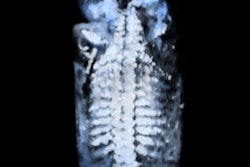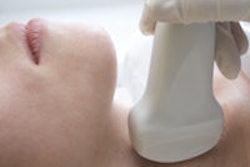The medical imaging market is moving toward solutions that manage patient comfort and safety more effectively. According to a recent Frost & Sullivan report,1 current trends in medical imaging include the following:
- Technologies that reduce and help manage ionizing radiation dose and exposure
- Mobile, transportable, and wireless solutions
- Elastography capabilities to assess tissue stiffness
- Technologies geared toward improving patient comfort and experience
- Entry-level advanced imaging equipment
Ultrasound checks all of those boxes, but to make the modality more widely available and user-friendly, image quality is essential. With better image quality, there can also be faster and more accurate diagnoses without compromising patient safety and comfort.
Ultrasound machines have been developed to manage all kinds of examinations, from ob/gyn to cardiac or general imaging. As the ultrasound system has become more sophisticated, users have become increasingly specialized and skilled in how to manage the system. Miniaturization of ultrasound equipment has facilitated the extension of point-of-care applications, i.e., when the clinician obtains a diagnosis using ultrasound at the bedside.
Because the ultrasound examination requires more hands-on involvement from the user compared to other modalities, experience is necessary. If the examiner is unable to get the image required for the diagnosis, the patient might be transferred for additional MRI or CT scans. This is not only time- and resource-consuming, it can also be a question of patient safety when the patient is exposed to unnecessary radiation from a CT study.
Ultrasound road map
As the ultrasound market continues to expand into new applications, new ways to use the modality are becoming available. Ultrasound is used in cardiology, breast imaging and biopsies, gastroenterology, head and neck surgery, neonatology, neurology, ophthalmology, vascular imaging, anesthesiology, pulmonology, urology, musculoskeletal exams, and emergency medicine, among other applications.
For point-of-care applications, clinicians want to get the best image quality with only a single-button approach. This requires ultrasound systems to be even more intuitive and user-independent, making it possible for a doctor with less ultrasound experience to get optimal image quality quickly and easily.
But while the ultrasound market has evolved rapidly to become more efficient, the industry faces a shortage of ultrasound specialists. Moreover, ultrasound systems are often used in a shared-services environment, where the demands on image quality vary from one clinical application to another. Systems need to be flexible, versatile, and easy-to-use to improve diagnostic precision and reduce scan time.
Improved image quality equals better diagnostics
To get good ultrasound image quality, you need good image enhancement software; a number of options are available with different levels of adaptiveness to the actual image signal. When image enhancement processing is not adaptive, the image can lose important information and artifacts can be introduced. A more adaptive filter makes the image true to the physical signal content.
For the clinician, quality image enhancement is when the image presents less noise, clearer lines, and good visualization of organ boundaries and texture. For shared services, image quality needs to be adapted not only to the image signal but also to the clinical application to satisfy the demands of the clinicians and specialists.
For point-of-care systems, the images should be easy to interpret even for clinicians with limited ultrasound experience. Because a diagnosis is often made during examinations, real-time image processing is essential.
Automatic measurement
Automatic measurement is another aspect where high image quality is required. For example, automatic measurements are used in ultrasound measurement of intima-media thickness, which is used to detect the presence of atherosclerotic disease and, more contentiously, to track the regression, arrest, or progression of atherosclerosis.
Manual measurements are time-consuming and dependent on training and subjective judgment. Automated measurement results are less dependent on the reader's experience, and variability between readers is less than with the old manual system.
Automatic measurements are also used to automatically detect inner and outer skull boundaries of a fetal head in ultrasound images. These boundaries are used to measure biparietal diameter and head circumference. In urology, automatic measurements are used to determine bladder weight. Ultrasound-estimated bladder weight is an important indicator for the diagnosis of bladder outlet obstruction.
These measurements require that the image has sharp lines and line connectivity, as well as high contrast.
3D/4D examinations
With 3D/4D ultrasound becoming more customized, examinations are more informative, providing even more accurate diagnoses. Currently, 3D/4D provides more clinical value in fetal imaging by finding abnormalities in the brain and detecting cleft palate. It can also be used in general imaging to detect and localize tumors, as well as in cardiac examinations for ejection fraction, regional dyskinesia/akinesia, and valve visualization.
3D ultrasound examinations provide large volumes of information. An adaptive processing algorithm will analyze every voxel to distinguish true information from artifacts such as noise and speckle. The true information will also be enhanced to visualize line and structure more precisely. Processing all of this information in real-time requires very sophisticated software and hardware.
3D/4D ultrasound is also taking on a major role in breast examinations. There have been several discussions recently about whether x-ray mammography should be used for women with dense breast tissue. Now it's possible to examine breast volumes with ultrasound. The location of a tumor is clearly shown, and the examination from start to diagnosis takes less than 15 minutes.
Patient safety at every level
The rise of 3D/4D ultrasound will decrease the use of other modalities, many of which confer radiation to patients. This is the future that awaits the ultrasound market: more true images shown in 3D/4D to provide less experienced doctors with the best image quality to help them to make a fast, accurate diagnosis. All with a technology that delivers no radiation, is mobile, and gives the patient a more comfortable experience.
References
- Frost & Sullivan. 2013 Global Medical Imaging Equipment Market Outlook. June 27, 2013.
Isabelle Wegmann Hachette is a senior application specialist for ultrasound at ContextVision. Per Flygare is an application specialist for ultrasound at ContextVision.
The comments and observations expressed herein do not necessarily reflect the opinions of AuntMinnie.com.



















